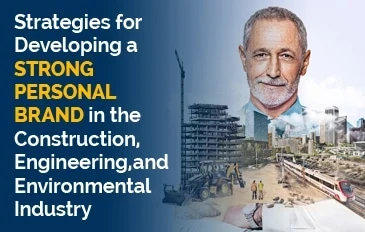Michael DeSafey | Executive Recruiter and HR Professional
LinkedIn for Environmental Professionals: Building Your Online Presence
In today’s digital age, establishing a strong online presence is crucial for career growth and networking. LinkedIn, as the leading professional networking platform, offers a valuable opportunity for environmentally conscious individuals to connect with like-minded professionals, showcase their passion for sustainability, and advance their green careers. This guide will take you through the process of building your online environmentally conscious presence on LinkedIn, from optimizing your profile to engaging with relevant content and networking effectively.
Optimize Your LinkedIn Profile
Your LinkedIn profile is your digital resume and the first impression you make on potential connections and employers. Here’s how to optimize it for an environmentally conscious presence:
- Professional Photo: Use a high-quality, professional photo that reflects your personal brand. Dress appropriately for your field while ensuring a friendly and approachable demeanor.
- Compelling Headline: Craft a headline that highlights your commitment to environmental causes and your area of expertise. For example, “Sustainability Advocate | Renewable Energy Enthusiast | Environmental Consultant.”
- Customized URL: Customize your LinkedIn URL to make it more memorable and professional. Ideally, it should be linkedin.com/in/yourname.
- Summary Section: Use the summary section to tell your story, emphasizing your passion for sustainability and your career journey. Include relevant keywords and showcase your unique perspective.
- Experience and Education: Detail your work experiences and educational background, emphasizing roles and accomplishments related to environmental initiatives.
- Skills and Endorsements: List skills relevant to your environmental interests, such as sustainability, renewable energy, conservation, or environmental policy. Encourage connections to endorse your skills.
- Recommendations: Request recommendations from colleagues or supervisors who can speak to your environmental expertise and dedication.
- Publications and Projects: Highlight any publications, research projects, or initiatives related to environmental issues that you’ve been involved in.
Connect with Environmental Professionals
Building a network of environmentally conscious professionals is a cornerstone of your LinkedIn presence. Here’s how to connect effectively:
- Connect Strategically: Send connection requests to professionals who share your passion for sustainability. Personalize your requests by mentioning common interests or experiences.
- Join Environmental Groups: LinkedIn offers a wide range of environmental groups and communities. Join these groups to connect with like-minded individuals, participate in discussions, and gain insights.
- Follow Environmental Influencers: Identify and follow influential individuals and thought leaders in the environmental field. Their posts and updates can provide valuable insights and networking opportunities.
- Engage in Conversations: Comment thoughtfully on posts, share relevant articles, and engage in conversations within your network and environmental groups. Active participation enhances your visibility.
Share Relevant Content
Sharing environmentally conscious content demonstrates your commitment to the cause and positions you as an informed professional. Here’s how to share content effectively:
- Share Articles and News: Post articles, news, and research related to sustainability, climate change, renewable energy, and other environmental topics.
- Highlight Achievements: Share your achievements, such as completing a sustainability certification or participating in a successful eco-friendly project.
- Participate in Challenges: Join LinkedIn challenges related to environmental awareness and sustainability. These challenges often involve sharing insights, statistics, or personal commitments.
- Create Original Content: If you have unique insights or experiences to share, consider writing original LinkedIn articles. This can help establish you as a thought leader in the environmental space.
- Use Hashtags: Incorporate relevant hashtags in your posts to increase their visibility and reach a broader audience interested in environmental topics.
Showcase Your Environmental Projects and Initiatives
LinkedIn offers features for highlighting your environmental projects and initiatives:
- Add Projects: In your profile’s “Projects” section, detail your involvement in environmental initiatives, from sustainability programs at your workplace to volunteer projects with environmental organizations.
- Document Achievements: Describe the goals, impact, and outcomes of your environmental projects. Include any awards, recognition, or certifications earned.
Follow Environmental Organizations and Companies
Stay updated on the latest news and opportunities by following environmental organizations, nonprofits, and environmentally conscious companies on LinkedIn. Many of these entities share valuable insights, job openings, and sustainability updates.
Engage in Meaningful Discussions
Engage in conversations that matter to you and the environmental community:
- Share Insights: Offer informed perspectives on environmental topics. Sharing your knowledge can establish you as a credible voice in the field.
- Ask Questions: Pose thoughtful questions to your network or in environmental groups to spark meaningful discussions and gather insights.
- Collaborate: Seek collaboration opportunities with professionals in your network who share your passion for sustainability. Collaborative efforts can lead to impactful projects.
Attend Virtual Environmental Events and Webinars
LinkedIn frequently hosts and promotes virtual events, including webinars and conferences related to environmental issues. Participate in these events to expand your knowledge, network with industry experts, and connect with fellow environmentally conscious professionals.
Use LinkedIn Premium for Enhanced Networking
Consider upgrading to LinkedIn Premium for additional networking benefits, such as increased access to profiles, advanced search filters, and InMail credits. This can be particularly useful for job seekers and those looking to connect with specific professionals.
Be Consistent and Active
Consistency is key to maintaining an active and impactful presence on LinkedIn. Regularly update your profile, share content, engage with your network, and participate in environmental discussions. Your commitment will be noticed by your connections.
Webuild Staffing Agency is a leading executive search and staffing agency dedicated to the construction, engineering and environmental industries. To learn more please visit: www.webuildstaffing.com


